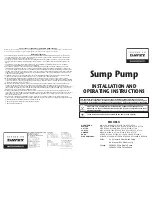
18
Cutting or flaring the pipes
1. Make sure that you prepared the required tools.
- Pipe cutter, reamer, flaring tool and pipe holder, etc.
2. If you want to shorten the pipe, cut it with a pipe cutter ensuring that the cut edge remains at 90° with the side
of the pipe.
- There are some examples of correct and incorrect cut edges below.
90°
Oblique
Rough
Burr
3. To prevent a gas leak, remove all burrs at the cut edge of the pipe with a reamer.
• Face the pipe down while removing the burrs to make sure that burrs
do not get in to the pipe.
4. Put a flare nut slightly into the pipe and modify the flare.
Pipe
Flare
Outer diameter [D(mm)]
Depth [A (mm)]
Flaring Size [B (mm)]
ø 6.35
1.3
9.0
ø 9.52
1.8
13.0
ø 12.70
2.0
16.2
ø 15.88
2.2
19.3
ø19.05
2.2
22.5
5. Check that you flared the pipe correctly.
- Below figures shows some examples of incorrectly flared pipes.
Correct
Inclined
Damaged
surface
Cracked
Uneven
thickness
6. Align the pipes to connect them easily. Tighten the flare nuts first with your hands, and then with a torque
wrench, applying the following torque:
Indoor outlet pipe
Connecting pipe
Flare nut
Apply frozen oil
Outer diameter (mm)
Torque (N•m)
ø 6.35
12~17
ø 9.52
30~35
ø 12.70
40~45
ø 15.88
50~60
ø19.05
60~70
• Excessive torque can be cause of gas leakage.
• You must purge with oxygen free nitrogen while brazing.
Pipe cutter
Pipe
Burr
CAUTION
NOTE
CAUTION
Refrigerant piping work
















































